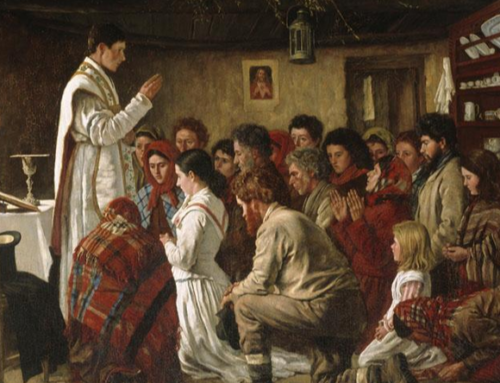Taste and see that the Lord is good. He is happy who seeks refuge in him. (Ps 34:9)
Food videos have taken over YouTube. Booming demand from millennials has turned YouTube into a new Food Network, with top food channels like Epic Meal Time and Rosanna Pansino amassing tens of millions of subscribers and billions of total views. With Instagram and Facebook also dominated by “food content,” young people increasingly spend their days looking at other people’s food.
A lot of these food videos are practical. For millennials living on their own for the first time, YouTube offers many tutorials for basic domestic skills and healthy recipes. If you don’t know how to scramble eggs or how to “meal prep,” YouTube offers a convenient way to learn.
Many other users watch cooking videos for the feeling of being in pleasant company. The various YouTubers—cheerful fermenters, serene vegans, or endearing abuelitas—seem to give viewers personal attention and care. One reviewer of the viral grandma-cooking channel De mi Rancho a Tu Cocina calls the channel itself “comfort food,” praising its beloved cook Ángela for filling a grand-maternal absence in his life.
Tens of millions of other foodies watch videos of complete strangers eating delicious foods. These mouth-watering clips, packed with visceral stimuli, give viewers the sense of feasting beyond the limits of money, place, or physical health. The recent trend of “mukbang” (eating broadcasts) of millennials binge-slurping spicy ramen is an indicator that my generation may be hungrier than it knows how to deal with.
“To be human is to be hungry,” writes Dominican Father Peter John Cameron in his book Jesus, Present Before Me. To be human is to be constantly searching for “that Something More that will satisfy every yearning, every longing, every desire inside us” (Cameron, 5).
YouTube foodies know this hunger. They live by it, constantly searching for new recipes to learn, new YouTube cooks to follow, and new eating broadcasts to “consume.” Yet this basic human hunger is not a sensory one. It is not the kind of craving that can be quenched by ordinary food, let alone images of food.
Only in God do we find the fulfillment we never stop searching for (CCC 27), because we are made to share his divine life (CCC 1). God first gives us this divine life in Baptism, and he nourishes it in us with Holy Communion, the “Food that makes us divine” (Cameron, 6), our “living bread” (John 6:51) and “street food” (viaticum) as we journey toward total union with him.
Jesus is truly present in every Eucharistic host consecrated at Mass. This means that unlike any other food, the Holy Eucharist is not just to be eaten but also to be worshiped (Sacramentum caritatis, 66). When consecrated hosts are kept in the tabernacle of a church, a lamp reminds us of Jesus’s true presence inside.
Many churches set aside a chapel where a consecrated host is taken out of the tabernacle and “exposed” on the altar to be worshiped all day by the faithful. This popular devotion is called Perpetual Adoration, and it allows you and me to encounter Jesus face-to-face at any time, any day.
This under-appreciated devotion seems well-suited to foodie young adults, since they are attracted to gazing at ordinary food. In Adoration, they can gaze instead upon heavenly food—the favorite superfood of abuelitas and nonnas. In the gaze of Jesus, foodies can encounter a more attentive host than any they will find on YouTube. Taken up in intimate prayer, they can spend hours savoring the food that sates every hunger.
Hungry readers, let us go to Adoration! Let us encounter Jesus there. He is the “food content” we are looking for.
Jesus said to them, “I am the bread of life; he who comes to me shall not hunger, and he who believes in me shall never thirst.” (John 6:35)
✠
Photo by Fr. Lawrence Lew, O.P. (used with permission)







